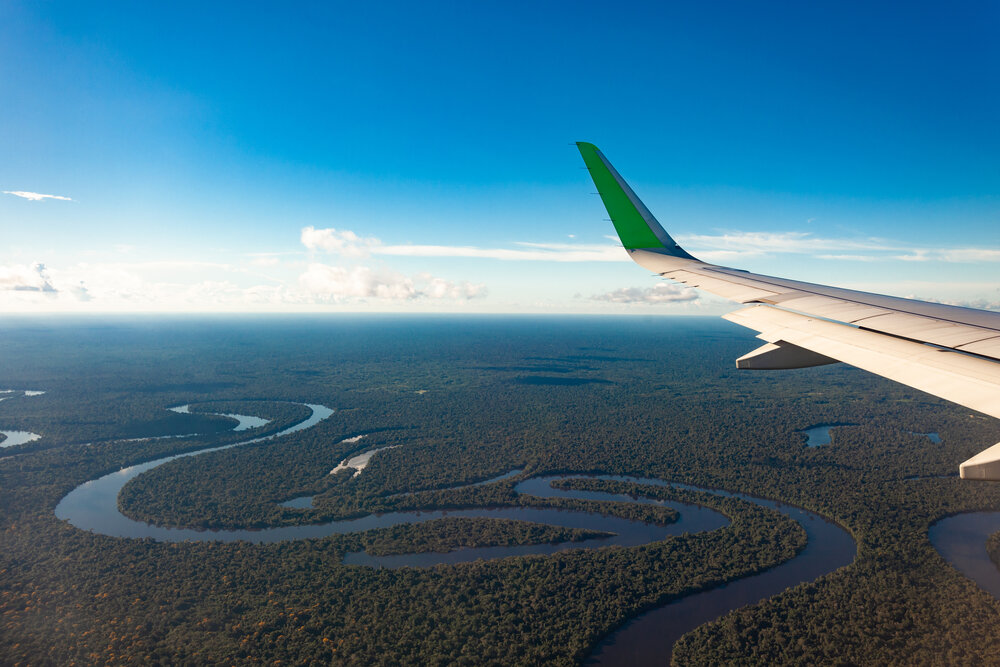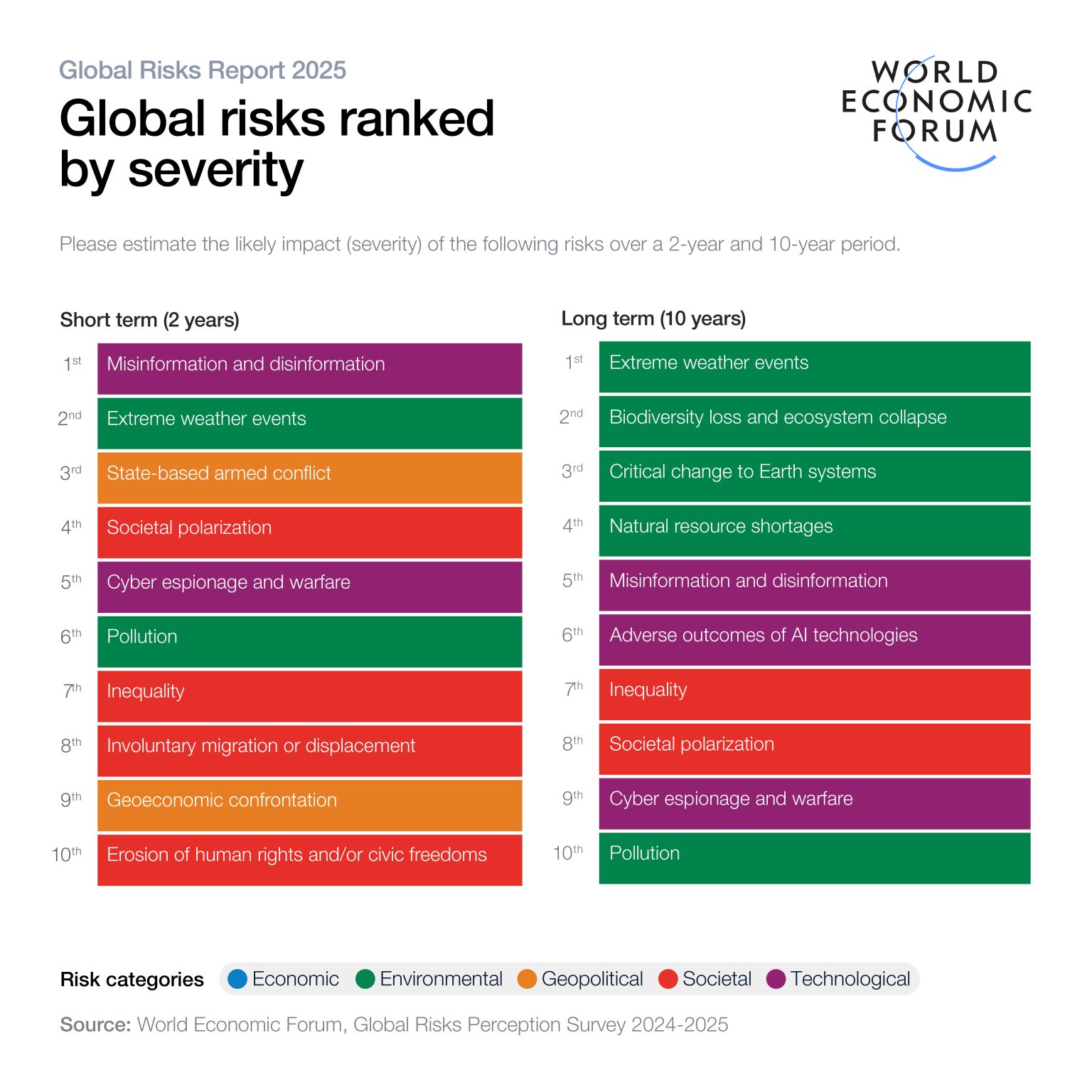Flying blind: How disrupting ecosystems puts everything at risk

The 20th edition of the World Economic Forum’s Global Risks Report lands with a stark warning: the planet is in peril. Topping the 10-year risk rankings are extreme weather events, the relentless loss of biodiversity, collapsing ecosystems and critical shifts in Earth’s systems – threats that demand urgent attention.
The unravelling of Earth’s ecosystems is perhaps the most insidious threat, yet it is often lost in translation.
To understand the danger, think of Earth’s ecosystems as a Boeing 747 aircraft – a complex and beautiful piece of engineering with 6 million parts, all working together to keep it in the air.
Imagine we’re all sitting comfortably in our seats cruising at 38,000 feet. You turn to your left and see a person holding a screw. Smiling, they proudly announce that they have removed it from the wing. The plane hasn't come crashing down yet, but you’d much prefer that screw be back where it should be. Who wouldn’t?
On a 747, every part, every screw, has a defined role – a role which only it can do to help keep the plane in the air. Sure, you might still be able to fly if you take out just one screw, but there will be consequences.
It’s the same with ecosystems. Every species is optimally fitted for a specific function – if you remove one species, something else must then do that job, normally at a far lower efficiency. Removing or damaging parts puts increased stress on other parts of the system.
Damage can cascade rapidly, driving an ecosystem to the brink of collapse – like a vibrant coral reef teeming with life deteriorating into an algae-covered grave.

This is why conservationists struggle to understand questions like: Why do we need this bug, this species, or this patch of forest? It’s like asking if we really need a particular screw on the plane we’re all flying on.
You'd be alarmed if someone started ripping parts off the plane mid-flight. Yet this is precisely what we’re doing to Earth's ecosystems, removing species, introducing toxins and disrupting critical systems with little regard for the consequences.
After enough damage, we’re no longer sitting comfortably, the cabin is getting hot, and there’s no longer enough food and water going around.
People are upset. The plane is losing altitude.
Around the world, teams of conservations are working tirelessly to undo the damage to Earth’s ecosystems, to keep the aircraft airborne. They have achieved small miracles and along the way collected significant volumes of data on ecosystems, but often this data is siloed between countries and teams.
So we find ourselves without a robust, consistent overview of the world’s ecosystems.
Despite the challenges, there is hope. Recognising the critical need for reliable ecosystem data, the Group on Earth Observations (GEO) is collaborating across sectors and borders to close data gaps, map ecosystems to recognised IUCN standards and make this information openly accessible through the Global Ecosystem Atlas.
The Global Ecosystem Atlas is a step toward addressing this crisis, but much more work remains. Click here to find out more about GEO Ecosystem Atlas.